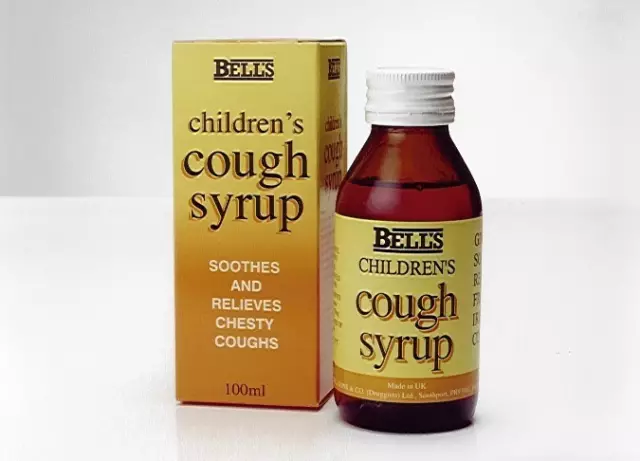- Author Rachel Wainwright [email protected].
- Public 2023-12-15 07:39.
- Last modified 2025-11-02 20:14.
Dysbacteriosis in children
The content of the article:
- Causes and risk factors
- Forms of dysbiosis in children
- Symptoms of dysbiosis in children
- Diagnostics
- Treatment of dysbiosis in children
- Diet for dysbiosis in children
- Possible complications and consequences
- Forecast
- Prevention

Dysbacteriosis in children is a violation of the normal ratio of obligate and facultative microorganisms in the intestine in favor of the latter.
According to various studies, a violation of the intestinal biocenosis is determined in 25-50% of healthy children in the first year of life. In children with somatic diseases, certain forms of intestinal dysbiosis are diagnosed in almost 100% of cases.
The composition of the microflora that populates the intestines of the newborn depends on the method of delivery, the environment in the neonatal period, and feeding. During the passage through the birth canal, as well as during breastfeeding, the child receives from the mother the bulk of the obligate microflora. In colostrum and breast milk, there are immune factors that prevent the colonization of the intestine by opportunistic microflora. Therefore, it is important to breastfeed the newborn during the first two hours after birth.
During the first week of life, a large number of opportunistic microorganisms settle in the child's intestines, which leads to the development of transient intestinal dysbiosis, which usually ends in the second week of the child's life (as lacto- and bifidobacteria displace other representatives of the intestinal microbiocenosis). Normal microflora prevents the colonization of the intestine by pathogenic microorganisms, participates in the production of certain vitamins, metabolism, the formation of immunity, stimulates intestinal motility and performs some other functions necessary for the normal functioning of the body. Under the influence of unfavorable factors, the normal intestinal flora in a child may not form, and transient dysbiosis becomes true.
Causes and risk factors
Dysbacteriosis refers to polyetiological disorders, the development of which can be facilitated by both exogenous and endogenous causes.
Risk factors for dysbiosis in newborns and infants include:
- the presence of infectious and inflammatory diseases of the urogenital tract in a pregnant woman;
- complicated course of pregnancy and / or childbirth;
- prematurity of the child;
- late attachment of the baby to the breast;
- inappropriate nutrition of the mother during breastfeeding;
- mastitis in a nursing mother;
- early transfer of the child to artificial feeding;
- improper child care.
In older children, the following factors contribute to the development of dysbiosis:
- diathesis;
- frequent acute respiratory viral infections;
- helminthic invasions;
- diseases of the gastrointestinal tract;
- unbalanced nutrition (with a predominance of carbohydrates and animal proteins in the diet);
- long-term treatment with antibacterial drugs;
- allergies;
- anemia;
- changes in hormonal levels;
- the impact on the body of adverse environmental factors;
- stressful situations;
- surgical interventions;
- malignant neoplasms.
Forms of dysbiosis in children
Depending on the predominance of one or another conditionally pathogenic microflora, dysbiosis in children is of the following types:
- candidal;
- staphylococcal;
- protean;
- associated.
According to the clinical course, the pathological process can be latent, that is, hidden, local, that is, local or generalized, that is, widespread.
Depending on the species and quantitative composition of microflora, four degrees of dysbiosis in children are determined.
- The predominance of anaerobic microorganisms, the number of bifidobacteria is more than 107-108 CFU (colony-forming units) in 1 g of feces, no more than two types of opportunistic microorganisms in the amount of 102-104 CFU in 1 g of feces.
- An equal amount of aerobic and anaerobic microflora, an increase in the concentration of lactose-negative and hemolytic E. coli, the number of opportunistic microorganisms is 106-107 CFU per 1 g of feces.
- The predominance of aerobic microflora up to the complete absence of lacto- and bifidobacteria, a significant increase in the number of opportunistic microorganisms.
- Associated dysbiosis; the absolute predominance of opportunistic microflora, which acquires resistance to most antibacterial drugs.
In terms of clinical and bacteriological indicators, dysbacteriosis in children can be compensated (corresponds to I-II degrees), subcompensated (corresponds to II-III degrees) and decompensated (corresponds to III-IV degrees).
Symptoms of dysbiosis in children
Compensated dysbiosis in children, as a rule, proceeds without any obvious clinical signs and is detected during the examination for another reason.
At the stage of subcompensation, infants develop frequent regurgitation, vomiting, loss of appetite, rumbling in the abdomen, flatulence, and spasms along the intestines. The child does not gain weight well, shows anxiety, irritability, and has disturbed sleep. Stool is usually abundant, liquid or mushy, foamy, and contains mucus. The feces are white or greenish, with a putrid or sour odor. In children with dysbiosis, there may be an increase in the amount of fatty components in stool (steatorrhea), protein-energy malnutrition, polyhypovitaminosis, anemia, and delayed physical development. The processes of fermentation and putrefaction occurring in the intestines lead to autoallergization with symptoms of urticaria, atopic dermatitis.

Among the signs of dysbiosis in an older child, there are increased salivation, bad breath, frequent belching, heartburn, intestinal colic, excessive gas formation, pain in the upper abdomen, a feeling of stomach fullness after eating, as well as diarrhea, constipation or their alternation, with In this case, the patient's feces have an uneven coloration. Children have seizures in the corners of the mouth, bleeding gums, acne, furunculosis, brittle hair and nails, dry skin, headaches, irritability, weakness and fatigue. The generalized form of dysbiosis in children (especially against the background of immunodeficiency) can manifest itself with glossitis, cheilitis, balanoposthitis or vulvitis, smooth skin candidiasis, visceral candidiasis.
In severe cases, a child with dysbiosis rises in body temperature, chills, cramping abdominal pains (mainly in the afternoon), nausea, diarrhea.
Diagnostics
A pediatrician and a pediatric gastroenterologist is involved in the diagnosis, a laboratory analysis for dysbiosis in children is mandatory.
In the course of physical diagnostics, the condition of the skin and mucous membranes is assessed, soreness along the intestines during palpation, and bloating are determined.
Laboratory diagnosis of dysbiosis consists in conducting a biochemical and / or bacteriological analysis for dysbacteriosis in children (feces, bile). Microbiological criteria are a decrease in the number of lacto- and bifidobacteria, a decrease or increase in the concentration of a typical E. coli, an increase in the number of microscopic fungi, cocci, clostridia.
To determine the etiological factor, you may need an ultrasound examination of the abdominal organs, gastroscopy, colonoscopy, laboratory examination of feces for lamblia, worm eggs, coprogram, biochemical blood test.
Differential diagnosis is carried out with malabsorption syndrome, ulcerative colitis, acute intestinal infections.
Treatment of dysbiosis in children
Dysbacteriosis in children of the first year of life, as a rule, does not require treatment. The best way to normalize the balance of intestinal microflora in this case is natural feeding.
Effective treatment of dysbiosis in children, first of all, requires elimination of the cause of the development of the pathological process.
In order to normalize the intestinal biocenosis, probiotics (containing monocultures of beneficial microorganisms or their combinations), prebiotics (promoting the growth and reproduction of representatives of normal intestinal microflora), symbiotics (combined preparations combining pro and prebiotics), bacteriophages (lyse pathogenic microorganisms) are usually prescribed. In some cases, antibiotic therapy may be necessary.

Source: e-torg.info
In case of severe digestive disorders, enzymes are prescribed, in case of intoxication, sorbents can be used (it should be borne in mind that they are taken separately from all other drugs). Vitamin therapy is often shown to sick children. For the treatment of severe candidal dysbiosis in children, antimycotic drugs are used.
Diet for dysbiosis in children
An important, or rather, paramount importance in the treatment of dysbiosis is given to diet. Fermented milk products are introduced into the diet of children who are on mixed feeding. Older children are limited in the content of carbohydrates, animal proteins in the diet; dairy products enriched with biocultures are included in the diet, as well as foods rich in fiber. Stimulation of the growth of normal intestinal microflora is promoted by corn, all types of cabbage, zucchini, carrots, fresh fruits and juices from them, nuts, bran, oatmeal, buckwheat porridge, and wholemeal flour products.
With constipation, white bread and all baked goods, rice, pasta, chocolate, cocoa should be excluded from the diet. For diarrhea, mashed cereals and vegetable soups, white bread croutons, infusions and decoctions of black currant, blueberry, dogwood, and jelly are recommended.
Possible complications and consequences
With decompensated dysbacteriosis, the general condition of the child suffers significantly due to constant diarrhea, vomiting, intoxication of the body, this can lead to acute infectious diseases of the gastrointestinal tract, enterocolitis, bacteremia and sepsis.
With long-term intestinal dysbiosis, immunodeficiency develops, as a result of which the child becomes susceptible to infectious diseases.
Forecast
With timely diagnosis and properly selected treatment, the prognosis is usually favorable. In the case of generalization of the process and the development of complications, the prognosis worsens.
Prevention
Prevention of dysbiosis in a newborn involves planning pregnancy, timely treatment of urogenital infections, balanced nutrition of a woman during pregnancy, and avoiding mental stress.
In order to prevent the development of dysbiosis in children, it is recommended:
- early attachment of the baby to the breast;
- timely treatment of somatic diseases;
- balanced diet;
- rational daily routine;
- avoiding the uncontrolled use of drugs (in particular, antibacterial and hormonal anti-inflammatory drugs).
YouTube video related to the article:

Anna Aksenova Medical journalist About the author
Education: 2004-2007 "First Kiev Medical College" specialty "Laboratory Diagnostics".
The information is generalized and provided for informational purposes only. At the first sign of illness, see your doctor. Self-medication is hazardous to health!






